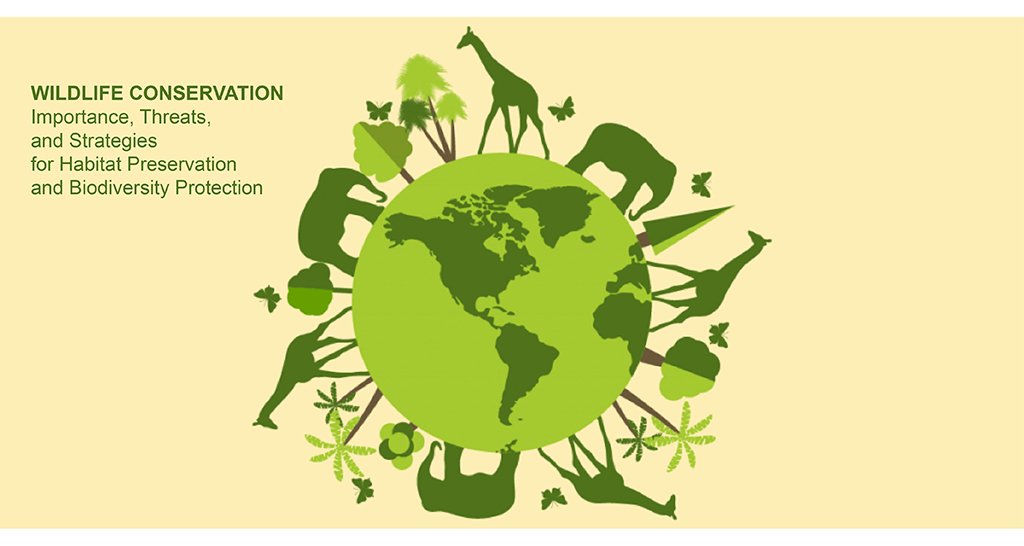Wildlife conservation refers to the efforts to protect and preserve the natural habitats of wild animals and their populations. With increasing human activities encroaching upon and destroying wildlife habitats, many species face the threat of extinction. Thus, wildlife conservation becomes an important area of concern to maintain the ecological balance and contribute to the quality of human life. By protecting plants and animal species and their habitats, we can preserve the natural world’s beauty and diversity, ensuring that future generations can enjoy it. Therefore, we must consciously promote wildlife conservation and ensure sustainable coexistence with the natural world.
The importance of wildlife conservation cannot be overstated. The proper functioning of ecosystems relies on biodiversity, and the consequences of losing a single species can extend far beyond its immediate impact. Additionally, wildlife conservation is essential for the aesthetic value of nature and the enjoyment of future generations.
Wildlife conservation can be accomplished through various means, with habitat conservation a critical approach. Preserving the natural habitats of animals and maintaining their ecosystems is vital. Protected areas, restricting human activity in sensitive zones, and reviving degraded ecosystems are among the many methods that can be employed.
Another vital method of wildlife conservation is captive breeding programs. These programs involve breeding animals in captivity and releasing them into the wild to increase population numbers. While this method has been successful in some cases, it is a short-term solution and should be used with other conservation efforts.
Education and awareness are also important in wildlife conservation. Many people are unaware of the threats facing Wildlife and the importance of conservation efforts. Educating the public about the importance of biodiversity and the need for conservation efforts can create a culture that values and supports wildlife conservation.
Significant threats to Wildlife:
Wildlife conservation faces numerous challenges, such as habitat destruction, overexploitation, pollution, and climate change. Poaching, the illegal hunting of animals for their parts, is a significant threat to several species.
Habitat destruction and fragmentation caused by human activities significantly threaten wildlife conservation efforts. Activities like deforestation, agricultural expansion, and urbanization reduce Wildlife’s space and resources, ultimately resulting in their decline and extinction. The COVID-19 pandemic has also caused an increase in human activity in green spaces, which further exacerbates the problem of habitat destruction. It is crucial to address these issues by implementing measures to reduce habitat loss and fragmentation, protecting critical habitats, and promoting sustainable land use practices.
By taking these steps, we can ensure the survival of wildlife populations and maintain a healthy ecosystem.
Climate change is also a growing concern as it disrupts many species’ habitats and migration patterns. It is crucial to address these threats by implementing effective conservation strategies and raising awareness among people about the importance of protecting Wildlife.
Overexploitation is a significant threat to wildlife conservation, where animals and plants are harvested faster than they can recover. This phenomenon is associated with overfishing and affects mammals, birds, amphibians, reptiles, and plants. The danger of overexploitation lies in the fact that if too many offspring of a species are taken, the species may not recover. For instance, overfishing of top marine predatory fish has led to a decline in fish sizes and numbers over the past century. It is crucial to regulate the harvesting of Wildlife and promote sustainable practices to prevent overexploitation and ensure species’ survival.
Habitat Conservation:
In order to address these challenges, governments, conservation organizations, and individuals must work together to develop and implement effective conservation strategies. This may involve legislation to protect Wildlife, funding for conservation efforts, and partnerships between governments, conservation organizations, and local communities.
Habitat conservation involves protecting a habitat to safeguard the species within it, often focusing on biodiversity hotspots; protected areas like national parks or nature reserves are typically established, and even non-protected regions can still be monitored and maintained.
The red-cockaded woodpecker is endangered and only lives in longleaf pine savannas maintained by wildfires; it is commonly found on US military bases where occasional bombings support the habitat, and artificial cavities are installed to increase their numbers.
Conservation genetics emphasizes the conservation of genetic diversity in addition to population management. High genetic diversity promotes adaptability, and low genetic diversity can lead to inbreeding depression, loss of diversity, and reduced survival; species with very low genetic diversity may require genetic restoration for optimal conservation.
Monitoring wildlife populations is essential for conservation, including gathering data on population numbers, distribution, and genetic diversity through direct and indirect methods such as camera traps, mark-recapture, transects, track stations, and fecal counts, which can be combined with genetic data to obtain a more comprehensive understanding of population viability.
In conclusion, wildlife conservation is essential for the preservation of biodiversity and the functioning of ecosystems. We must take action to protect and preserve the natural habitats of wild animals and to educate the public about the importance of conservation efforts. Collaboratively, we can secure the opportunity for upcoming generations to appreciate the splendor and variety of the natural world.












